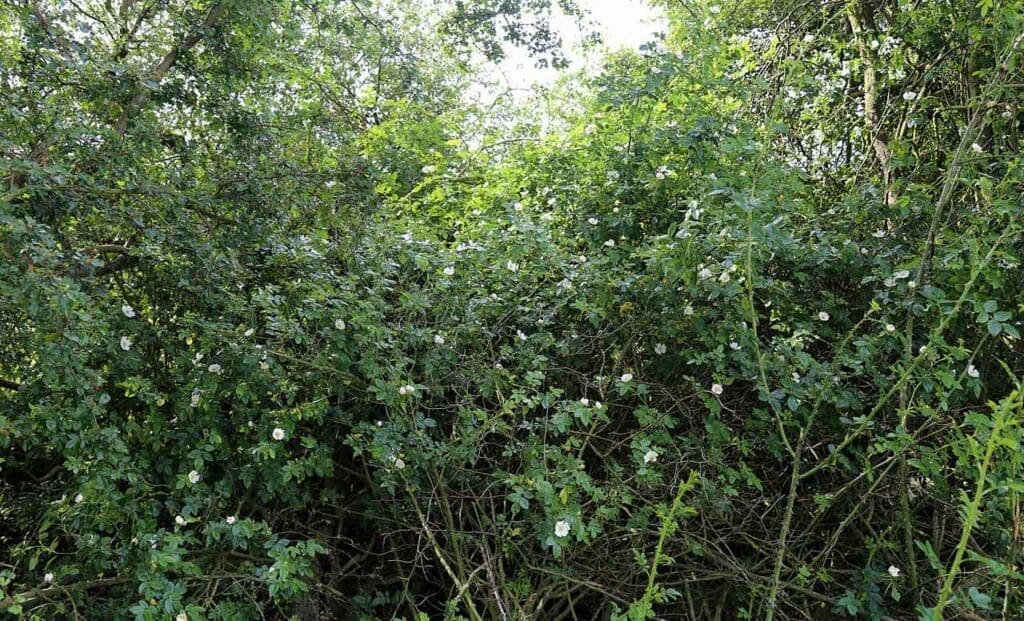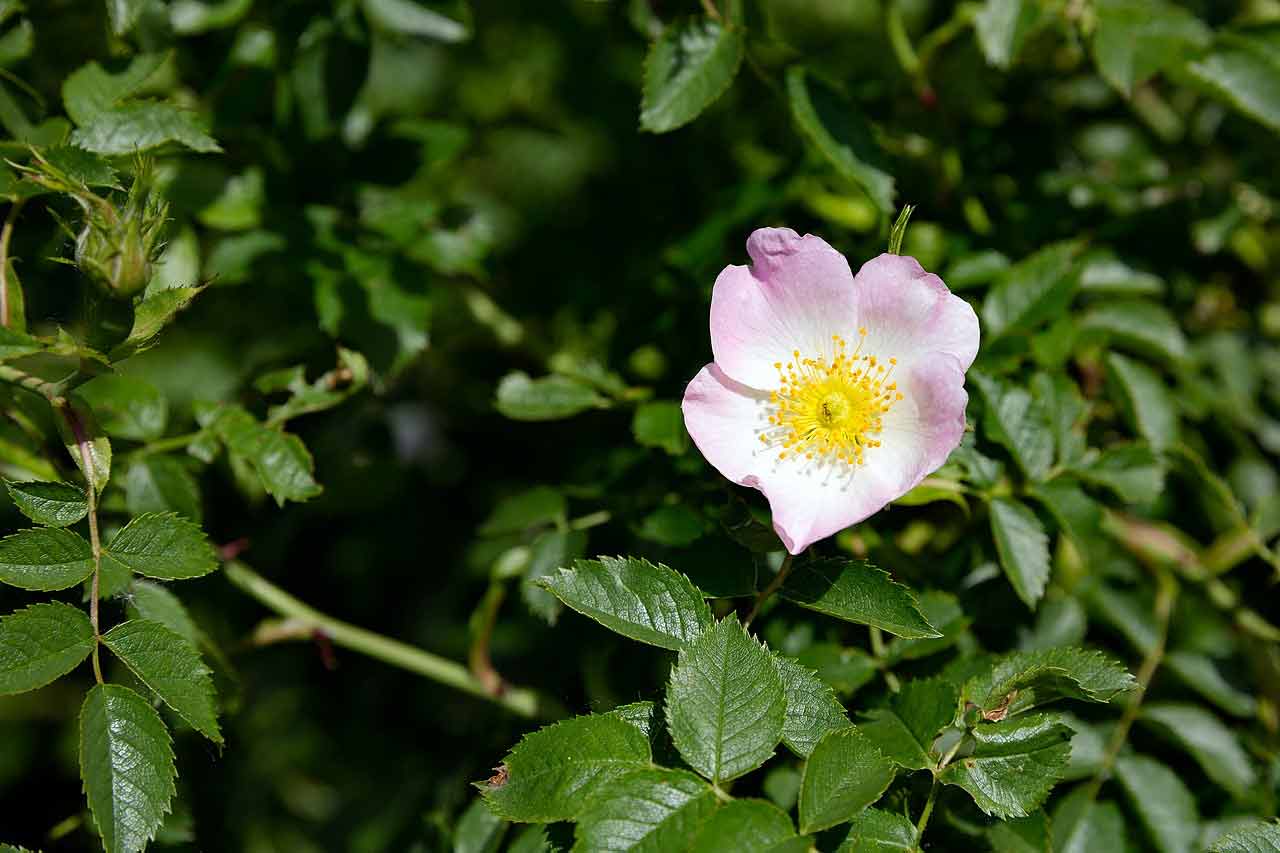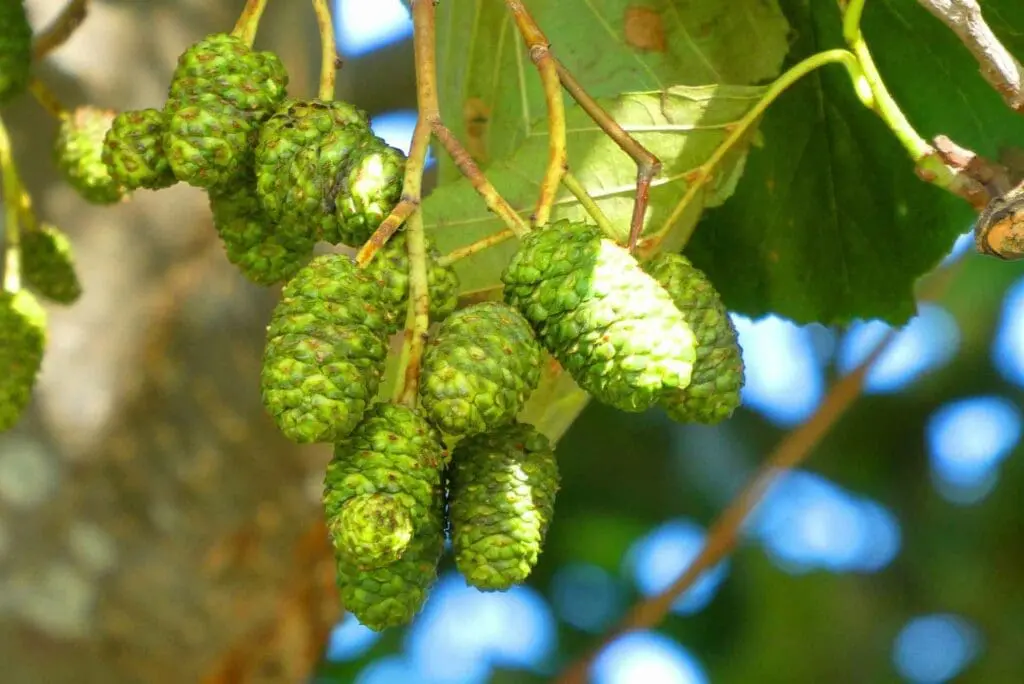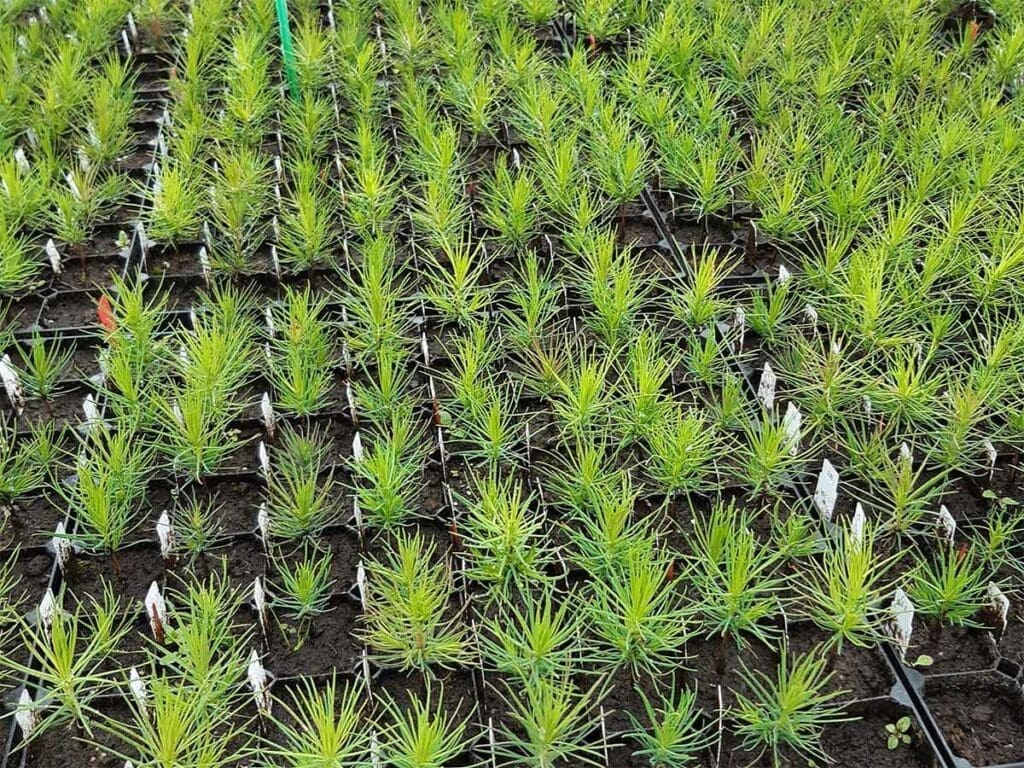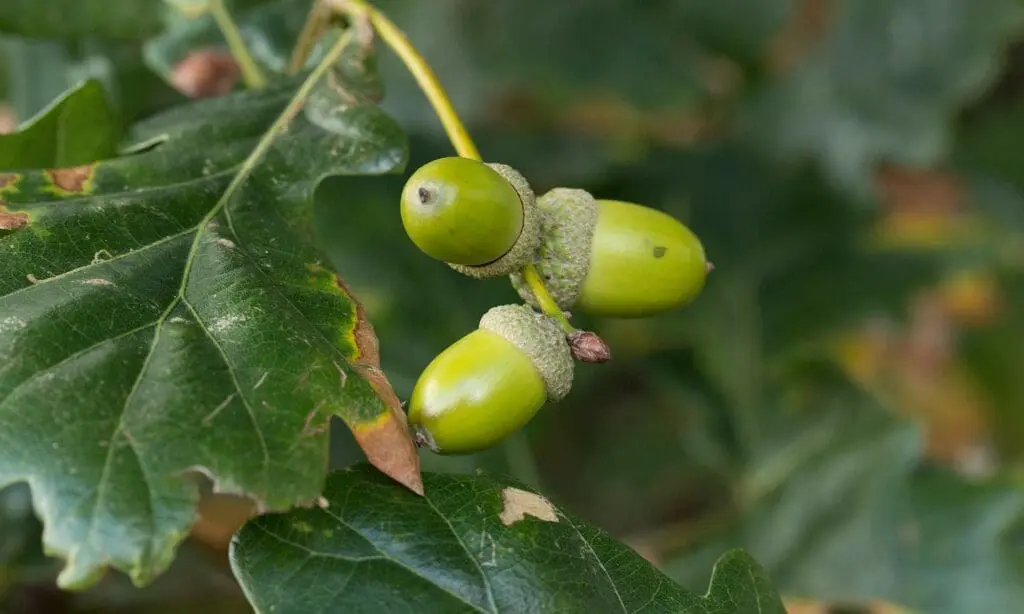- Common name: Dog rose
- Scientific name: Rosa canina
- Family: Rose (Rosaceae)
- How to grow Dog Rose
Dog rose is a host of a small gall wasp (Diplolepis rosae) which lives in a bright-red gall called a “robin’s pincushion”. It has nothing to do with robins but is a maze of up to 60 chambers, each containing a larva.
Plants make galls as protection when attacked by insects, fungi, bacteria, mites and small worms.
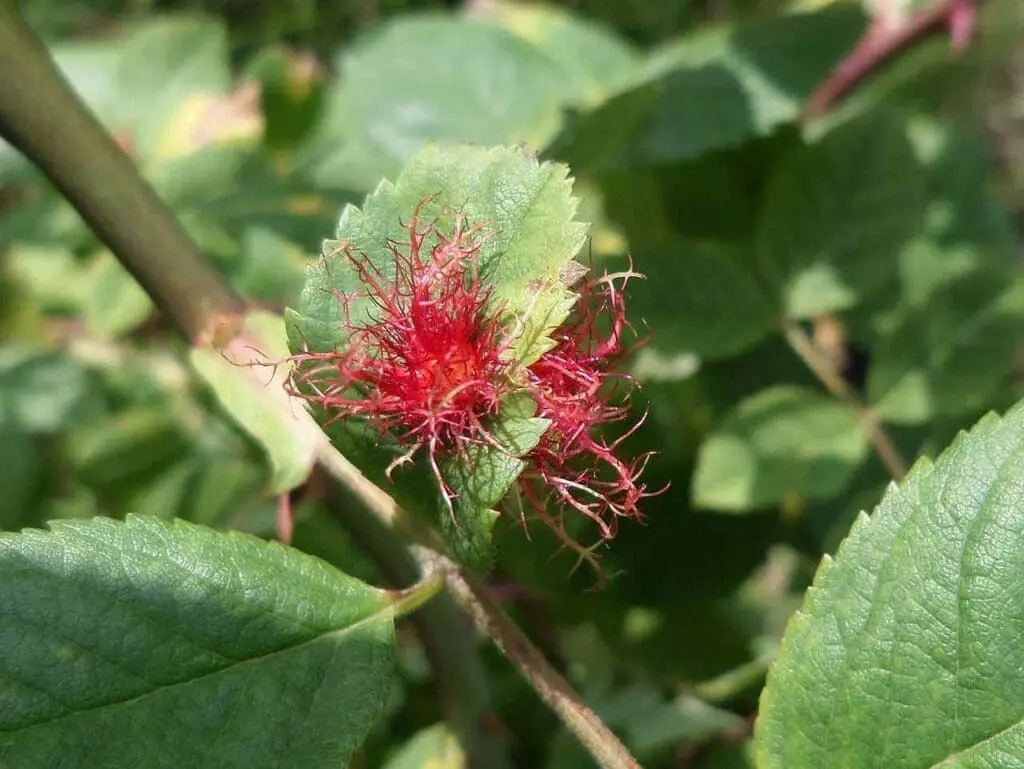
Leaves
The leaves are compound. They are alternate and each has 5-7 leaflets.
The leaves are usually hairless and dark green. The underside of the leaf is lighter.
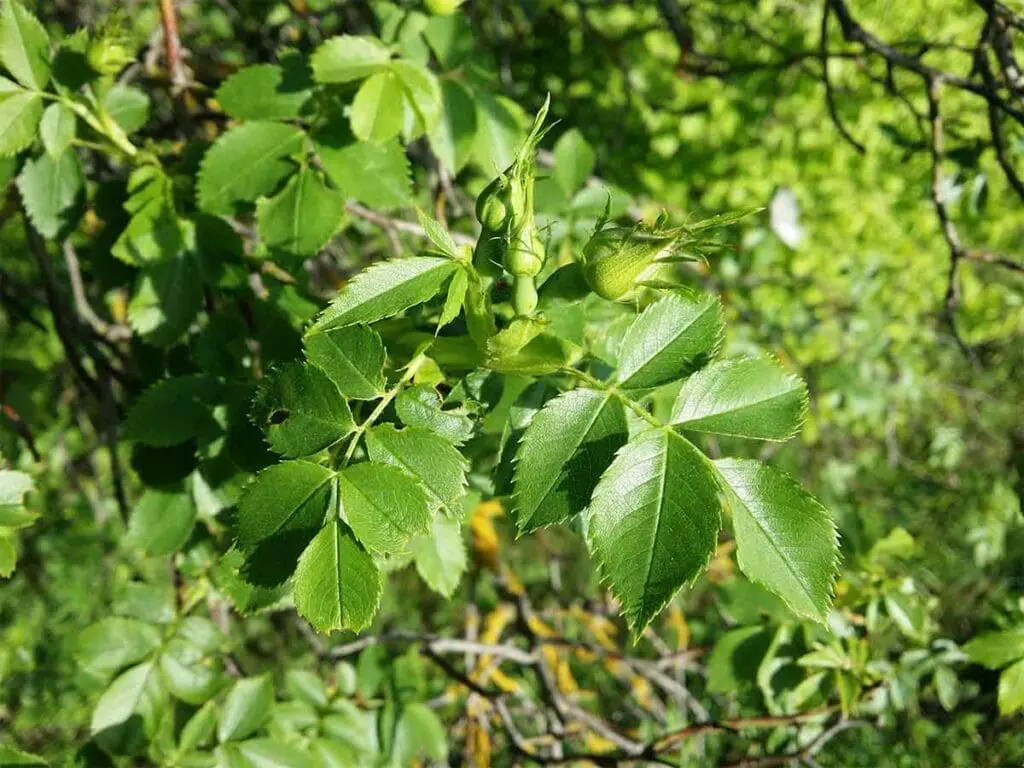
Flowers
There is great variety between different dog rose plants and many hybrids exist. This makes identification difficult as all forms are very similar.
The flowering period is usually in June and July. They have 5 petals and these can vary from white to light pink. The flowers have a strong and pleasant smell.
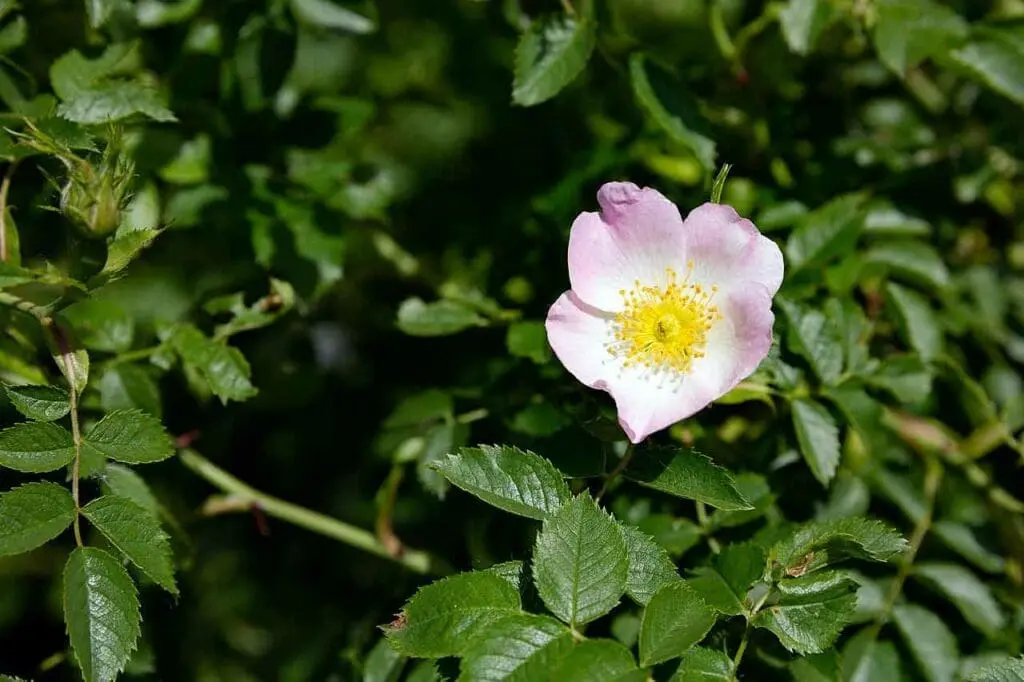
Fruits
Dog rose fruits are bright red, ripening in September and into October.
The fruits are eaten by birds and small mammals. They help to disperse the seeds. Another way that this plant reproduces is by sending out ‘suckers’ from its roots. These new plants are genetically identical to the parent.
You can make a jam from the fruits they are rich in vitamin C.
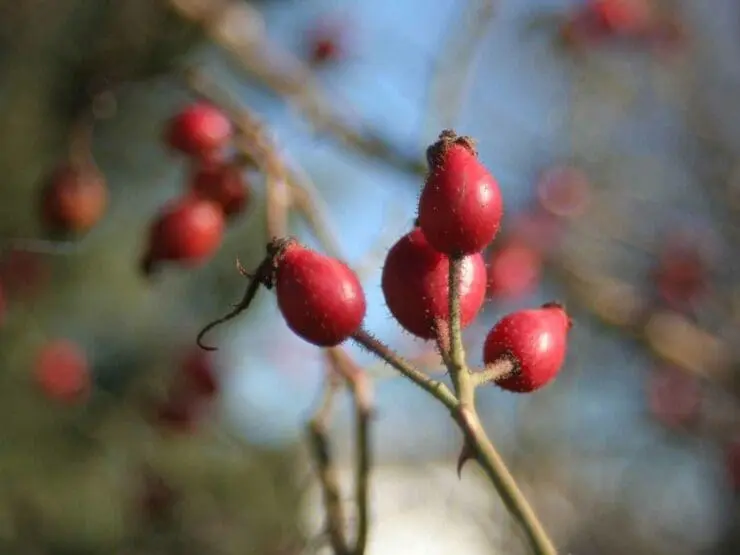
Bark
The rose doesn’t have thorns, but spines. A thorn is a modified branch or stem and is made from the same substance as the stem itself.
A spine, on the other hand, is a modified leaf and is made from a different material than the stem. Spines and thorns serve a number of functions – mainly defence, an aid to climbing or ‘rambling’ through other plants and as a tool to reduce the evaporation of water – protecting the plant in drought conditions.
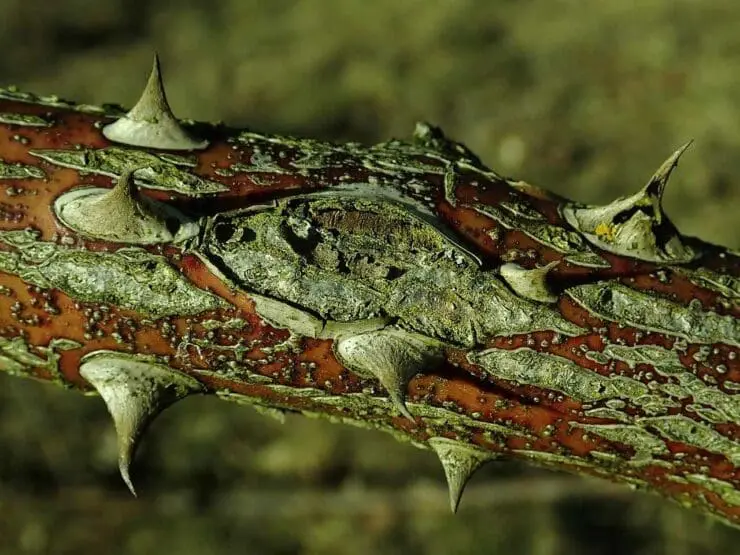
Habitat
Dog rose grows, or ‘rambles’ up to 3m tall. It doesn’t often reach this height as the branches tend to arch over.
The most common place to find the dog rose is in hedges. It also grows on poor meadows, woods, scrubland and at the woodland edge.
